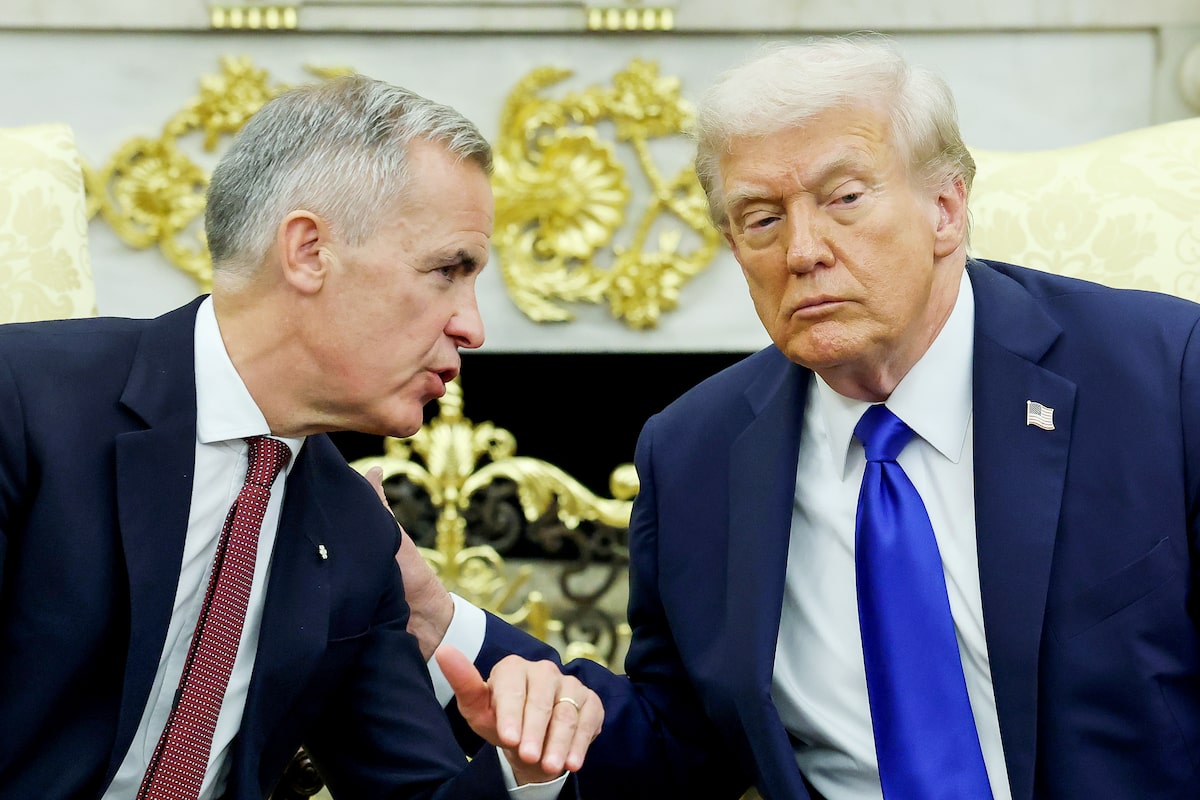Prime Minister Mark Carney, left, and U.S. President Donald Trump, right, in the Oval Office of the White House on Tuesday.Anna Moneymaker/Getty Images
When Prime Minister Mark Carney met with President Donald Trump in Washington this week, he went to great lengths to emphasize how much money Canada has invested in the United States in recent years.
In doing so, Mr. Carney was appealing to a transactional president who has made pledges of investment in the U.S. a staple of his recent trade deals with countries – even if a large chunk of those promised investments was likely to happen anyway.
During the Oval Office meeting, Mr. Trump boasted repeatedly of securing US$17-trillion in promised investments from countries and companies during his first eight months in office.
Shortly after, Mr. Carney picked up that thread. “We are the largest foreign investor in the United States. Half a trillion dollars in the last five years alone,” he said. “Probably a trillion dollars in the next five years if we get the agreement that we expect to get.”
Both men relied on inflated numbers, though to widely varying degrees.
In the case of Mr. Trump, observers have not been able to account for his US$17-trillion claim. The White House’s own investments page, under the heading “The Trump effect,” lists US$8-trillion in pledges.
What’s more, the page lists US$600-billion in investments over four years that were secured as part of the European Union trade deal announced in July. At the time Mr. Trump called the money “a gift” with which he could do “anything I want.” The White House later clarified the money reflected expected new investment by European companies.
Yet as Doug Porter, chief economist at Bank of Montreal, noted at the time, EU companies were already investing an average of US$150-billion a year in the U.S., so four more years of the same would allow the EU to meet its promise.
Mr. Carney may hope for a similar arrangement, though he too inflated Canada’s investment record.
The latest foreign direct investment numbers for 2024 from the U.S. Bureau of Economic Analysis show Japan edged out Canada for the largest international investment position, while FDI inflows from Canada took closer to a decade to amount to roughly US$500-billion.
As part of Japan’s trade deal with Mr. Trump, the country committed to invest US$550-billion in the U.S. by 2029. Japan announced last month it will set up an investment facility through a state-owned development bank to support the pledge.
Still, Canada’s investment position in the U.S. has grown much faster than most other countries’ in recent years.
If Canada simply maintained the same average annual pace of investment growth as it did over the past five years, in another five years Canada’s investment position in the U.S. will have topped US$1-trillion.
That could allow Mr. Trump to add another 13-digit sum to his list of investment commitments, while potentially securing more favourable tariffs on Canadian goods.
Decoder is a weekly feature that unpacks an important economic chart.

